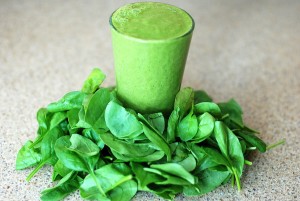Are You Sure You’re Getting Enough Protein?
Did that title give you a little anxiety? If so, you may be suffering from “Proteinophobia,” or the fear that you are not getting enough protein.
This affliction strikes the hearts of millions of Americans. In a world where carbs and fat are vilified, it seems protein is the sacred macronutrient, one we can all agree is just plain good.
Food manufacturers and marketers know this phobia is widespread. Peruse the middle aisles of your local supermarket and check out the packaging of some of your favorite brands and you might be surprised to see that your Fruit Loops are “now a great source of protein!”
With all of the hype over this macronutrient, you’d think we were at high risk of deficiency. But let’s look into the science to find an answer.
Diagnosable protein-deficiency is called “Kwashiorkor,”¹ and is most commonly seen in infants and children in areas of starvation. A quick Google search for cases in the United States yields very few results, a handful here and there, often related to extenuating circumstances.
A second case of protein-deficiency is called “Marasmus,” which is marked by a deficiency in all three energy-yielding macronutrients (protein, fats, and carbs). In practical terms, this is simply starvation, and being protein deficient is just one of the many problems. Notably, there are few cases of this in the US as well, and certainly if you are reading this article you are not at risk.
So, apart from medically diagnosable protein-deficiency, how much do we actually need?
A report on protein needs in the diet was released by the World Health Organization (WHO) in 2002.² While I won’t go into all 284 pages of the report, the review highlights the science on protein needs — and the results are undoubtedly surprising for most Americans.
Two numbers stand out. First, the amount of protein your body loses every day, from daily metabolic activities. This is called “obligatory nitrogen losses.” It is simply an unavoidable cost of being human that some amino acids are lost everyday. From the report, a reasonable estimate of the daily protein losses is 0.3 grams per kilogram of bodyweight.
The second number to highlight from the report is that the median protein requirement is 0.66 grams per kilogram of bodyweight, as found in a meta-analysis of current research.
Let’s use me as an example. I currently weigh 170 pounds, or 77 kilograms. Using the two equations above, we get two estimates of my protein needs: 23.1 grams, and 50.82 grams. The first number is the estimate of my daily protein losses, and the second uses the median for protein needs.
It is important to note that the first number (23.1 grams) would be the minimum protein I would need to consume daily to maintain balance — 23.1 grams in, and 23.1 grams out, every day.
From this perspective the second number can be considered oversight: more than I need to maintain balance, but since I exercise and try to stay active, a safe level just in case I need more on a particular day.
We consume more protein than we need in this country.
You might be surprised to learn that the daily average intake of protein for adults 19-30 in the US is a whopping 91 grams per day.³ That’s nearly twice as much as my safe number, which itself is already twice as much as my minimum need.

Is there protein in rabbit food?
A second interesting finding from the WHO report is specifically for strength-training males. Everyone who lifts weights knows you have to pack in the protein to gain more muscle and strength, right? Well, researchers fed one group of strength-training males 2.62 grams of protein per kilogram and another group 1.35 grams per kilogram and found ZERO difference in strength output and muscle mass gains. In other words, consuming more protein did not help in any measurable way.
So, after a certain point, more protein is at best neutral, and as we’ll see, may be harmful. But we still need some of it every day from food.
What would it look like for a rabbit-food eating vegan such as myself to consume between 23 and 51 grams of protein? What types of foods would I have to eat? Is it possible to reach these levels without meat or other animal products? And what percentage of my daily calories then must come from protein?
Check out Part 2 of this series to find out!
¹http://en.wikipedia.org/wiki/Protein%E2%80%93energy_malnutrition
²http://whqlibdoc.who.int/trs/WHO_TRS_935_eng.pdf?ua=1
³http://ajcn.nutrition.org/content/87/5/1554S.full



